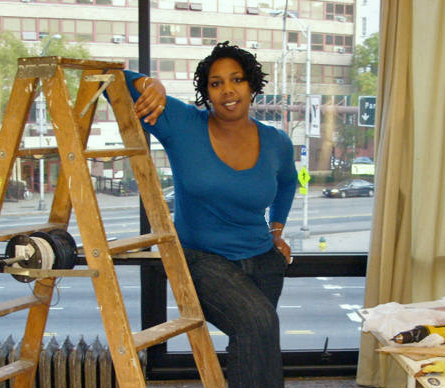
Lisa Bradley at her brand new studio space in Brooklyn, NY.
Detroiter by birth and New York-raised, Lisa Bradley is an artist based in Brooklyn, NY. She earned a Bachelor’s degree in Sculpture & Extended Media from Virginia Commonwealth University in 2001, and an MFA from the School of the Art Institute of Chicago in 2004. That same year, Lisa was a studio fellow in the Whitney Independent Study Program. She received a Professional Development Fellowship from the National Endowment for the Arts in 2004, and in 2005 held a visiting professorship in sculpture at the Tyler School of Art in Philadelphia. In 2006, Lisa moved to London to collaborate with a group of UK artists, and then completed an MA in Art & Media Practice at the University of Westminster in 2007. While residing in London, she received an artist’s commission from Whitechapel Gallery, and was also artist-in-residence there from 2008-09. Bradley has recently returned to the US and currently resides between New York and London, where she is completing a PhD in Visual Culture.
Inside the Artist’s Studio has given me the opportunity to reconnect with Lisa on the occasion of her return back to the States. She is one classy young woman whose political consciousness goes hand-in-hand with her work. Lisa is not an art producer but rather an art thinker with a clear voice – a voice that she makes heard when the time is right.
I enjoyed working with Lisa on this post a lot. It is my pleasure to introduce to you, Lisa Bradley.
Georgia Kotretsos: After living and working for three years in London, you’re back in Brooklyn, NY. How did you find the art scene in London and why did you move there in the first place?
Lisa Bradley: I’d describe London’s scene as difficult to penetrate – not that I was even trying to. I was there trying to work out stuff I had going on within myself. Yet I got the sense that Americans, all Americans, were viewed as being very brash, opportunistic, and careerist. If I were any of those things, I’d be rich and famous by now!
But I think the fact that I was there, I was American, and I was an artist made people, especially other artists, wonder what I wanted. It’s a small country and maybe the size breeds defensiveness. Also, I think the UK is going through a period when it feels very “invaded”: as if everyone from everywhere else is coming to take what it has. Possibly because it did this to other countries and is experiencing the big payback! Whatever the case, I didn’t connect with very many artists there; people do want to visit your studios, but, oh no, you can’t come to theirs!
I was really hoping to collaborate with other artists, but the attempts weren’t productive because of what I felt was this fundamental “closedness.” It’s the most international city in the world, but I discovered that being “foreign” and “American” are not the same thing! It was a huge stroke of luck to connect with the curators at Whitechapel, who were excited about my work and liked my ideas. Usually opportunities like this have come through other artists, but this one didn’t. I went there to apply for a part-time job and had a conversation that led to me applying as an artist-in-residence.
I moved to London in September 2006 primarily because of my profound disappointment with the political climate in the US. Bush had somehow landed in the White House again, and things were continuing to deteriorate at a level I’d not seen in my lifetime. Then Katrina happened in August 2005. At that point, the mask was ripped off: American racism was displaying its core. The news media was using terms like “refugee” to describe American citizens whose ancestors literally had this country built upon their backs, and though I know America like the back of my hand, I was shocked. I felt powerless and furious and needed to step back from the US and look at it from a distance. In retrospect, I see that my second reason for leaving was related to that same idea of distance. I think artists really do need to move around a bit and look at things from different angles. It was immensely significant for my practice.
GK: Tell me about your residency at White Chapel and the work you produced there.
LB: The Whitechapel residency was amazing in that I was able to create whatever I wanted, I was supported, and worked with some of the most stellar art professionals in the world. The gallery had just done a complete renovation so I was one of the first artists to exhibit in the new space. All this, but no studio space! So, I really had to rethink the idea of what a “residency” was, and I was able to begin thinking more compactly, as in: how do I represent all the things I want to represent, without actually physically using them?
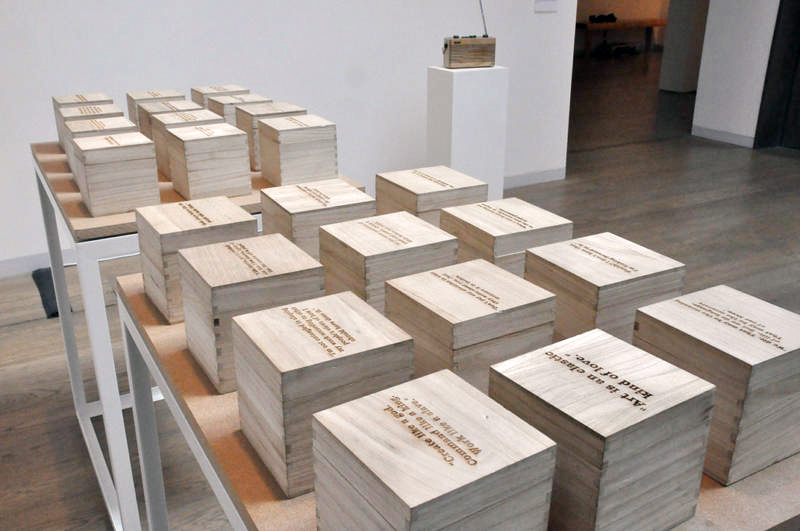
Lisa Bradley, "Studio," Whitechapel, London, 2008 - 2009
That was how the idea of the boxes came about – I had to contain everything and make them portable enough to pose these conceptual questions I was asking about giving artists residencies without actual space. It was a mild institutional critique, but done with humor. I gathered artist’s quotes on various subjects: their practice, funding, and art itself. Then I paired those quotes with specific fragrances that I felt related to the quotes (“I’m always making a comeback, but nobody ever says where I’ve been.” Billie Holiday fragrance: vinyl) or (“Gods always behave like the people who made them.” Zora Neale Hurston fragrance: PlayDoh) or (“I love America, I gotta say. But America will be judged.” Bob Dylan fragrance: tar and leather). This piece was the culmination of many years of wanting to somehow include scent as a component of my work. Viewers became participants as they took in the fragrances, discussed the quotes, and sough to connect the dots in this piece.
GK: What are your thoughts on identity politics and how are they manifested in your work?
LB: My work has always dealt with the triad of race, identity, and history, and how these subjects impact the performativity of life. The interactive performance at Kenwood House entitled Guess Who Almost Came to Dinner? (2007) was about life in an in-between space: Dido Lindsay lived at Kenwood as a servant—but not quite—as a treasured “pet,” yet received an allowance and as a member of the family, almost. I was attempting to dissect this position by utilizing the most ironic device I know: humor. Providing curtsy lessons and instruction in paper doll-making of black icons were elemental to this aim.
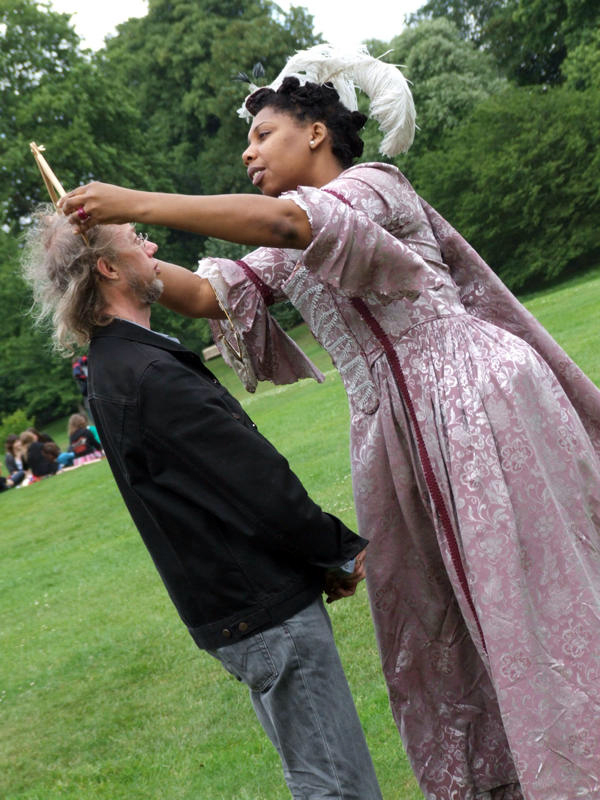
Lisa Bradley, "Guess Who Almost Came to Dinner?" (2007)
A few years ago, a term emerged in reference to black artists: “Post-Black.” It was coined by curator Thelma Golden, who organized the Whitney Museum’s notorious Black Male exhibition in 1994. It’s been co-opted by so many people since then that I’m not sure of her original meaning, but these days it’s often used to describe black artists that make work that doesn’t engage with ideas of “blackness”—work that doesn’t focus on issues of race identity—feeling that it limits creative expression, especially as it refers to contemporary art practice. I resist this idea; my work utilizes these ideas as a springboard to discuss the state of humanity in general. I begin with identity because we’re all multifaceted, and because of the black American experience, which is very unique to the US (by that I mean that we’re the only group that is here but didn’t want to be, and don’t have a true “homeland” to return to); some facets are more developed and resolved than others. So on a very real level, I think black artists have an incredibly rich and deep well from which to draw ideas for work. So I’ll probably never be a “Post-Black” artist. Most surely I will always be concerned with identity and I think, as long as I’m formally on point and remain non-didactic and non-prescriptive, I can take my work in hundreds of directions from here.
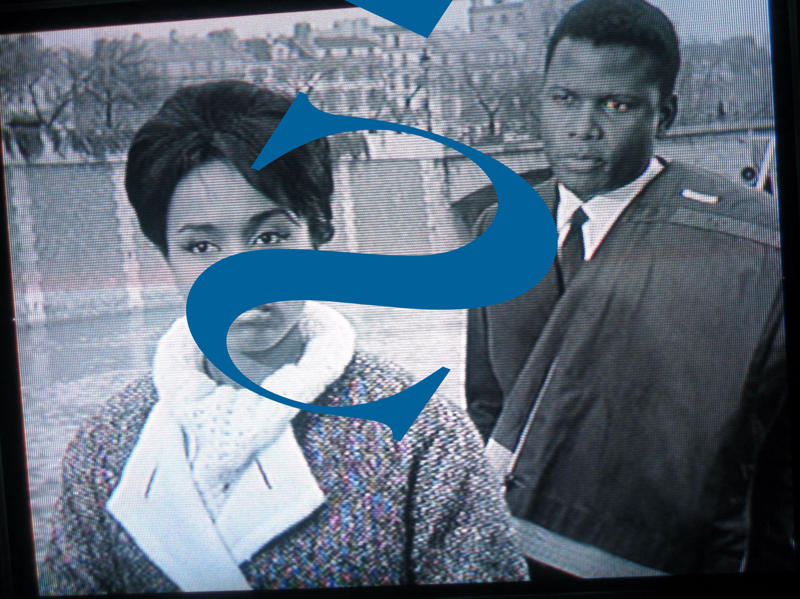
Lisa Bradley, "I'll Never Be the Same" from "The Cipher Series," 2008
GK: Since you got back, you went through a six-month period where you did not have a studio. How did that in-between stage affect your practice?
LB: Since my work is research driven, I used that time to read, study, and dig up information about what direction I want to take next with my work. The Whitechapel commission was successful in that lots of people loved the concept and its execution. However, since I want to take the practice of creating scent for use in my work even further, I’ve recently completed a course that focused on the molecular structure of odors, and now I’m applying those principles to the substances I’m making. It was also important for me to draw and sketch regularly while journaling, just to keep my ideas in front of me and make sure they were in motion.
GK: Walk us through your new space and the pros and cons of having a studio in Brooklyn now. How do you experience the talk about the “end” of the recession in the US?
LB: My new space has actually been vacant for a long time, so it needed quite a bit of work. It was previously a tailoring shop and every surface was covered with carpet or wood paneling. I had to strip it down to the bare wood and then install clean plywood over the floors and walls. I also created a wall! Being a sculptor means I felt confident about doing it myself, which kept costs down. Another great thing about doing all this work myself is that I’ll be able to keep the rent stable for a few years; that was part of the deal. I’m also in love with the location: nowhere near the “scene”—that “oh-we’re-hipsters-with-ironic-t-shirts-and-MFAs” area of Brooklyn where lots of artists prefer to be these days. I’m tucked away in Midwood—no shops selling soy candles or hemp clothes, instead a working-class neighborhood, with everyday people. I feel really connected, even though a building full of artists isn’t exactly the norm here.
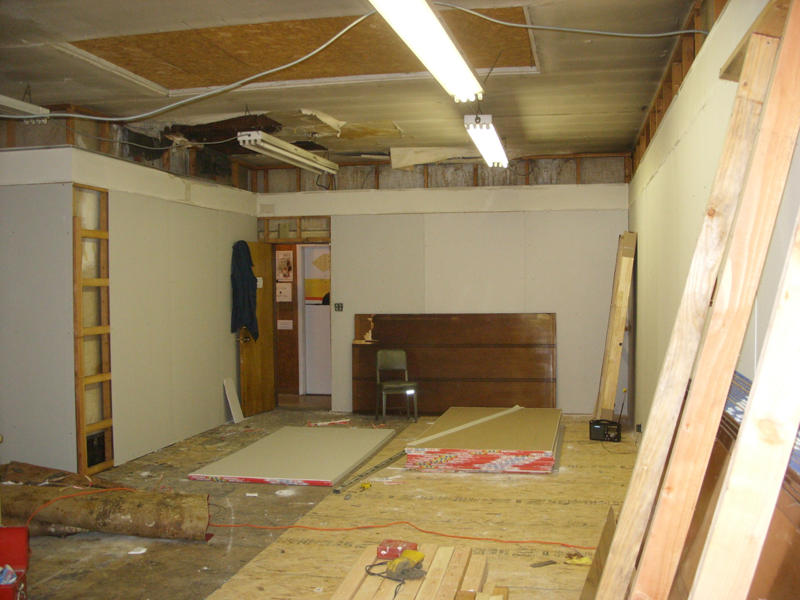
Lisa Bradley, Brooklyn studio, 2009
It hasn’t been my experience that the recession has ended in the US. I still think the country has a very long way to go before “the end” and ultimately, I feel things will never be the same. There are organizations and foundations who’ve shut down entire funding initiatives for arts funding and programming, and most of those won’t recoup. But for artists looking for space are concerned, I’d say that this is wonderful time; owners are more flexible and there’s also a bit of an exodus from the city—many people feel that things are too tough right now to stay.
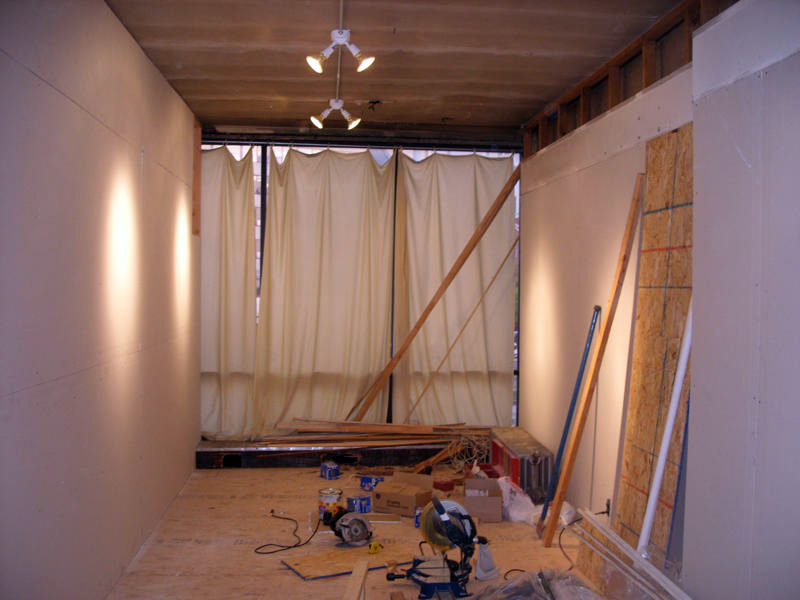
GK: What’s next on your plate?
LB: I’m working on a new body of work, one that I think will somehow synthesize some of the issues I’ve worked with while abroad, while also reflecting this new experience of being back. While I’m working really hard to stabilize and establish myself here, I’ll also continue to travel, study, and teach abroad, and allow those things to impact the scope and direction of my work. There’s always something about an unfamiliar place that floods me with new ideas.
And that’s a wrap!




Pingback: What’s Cookin at the Art21 Blog: A Weekly Index | Art21 Blog